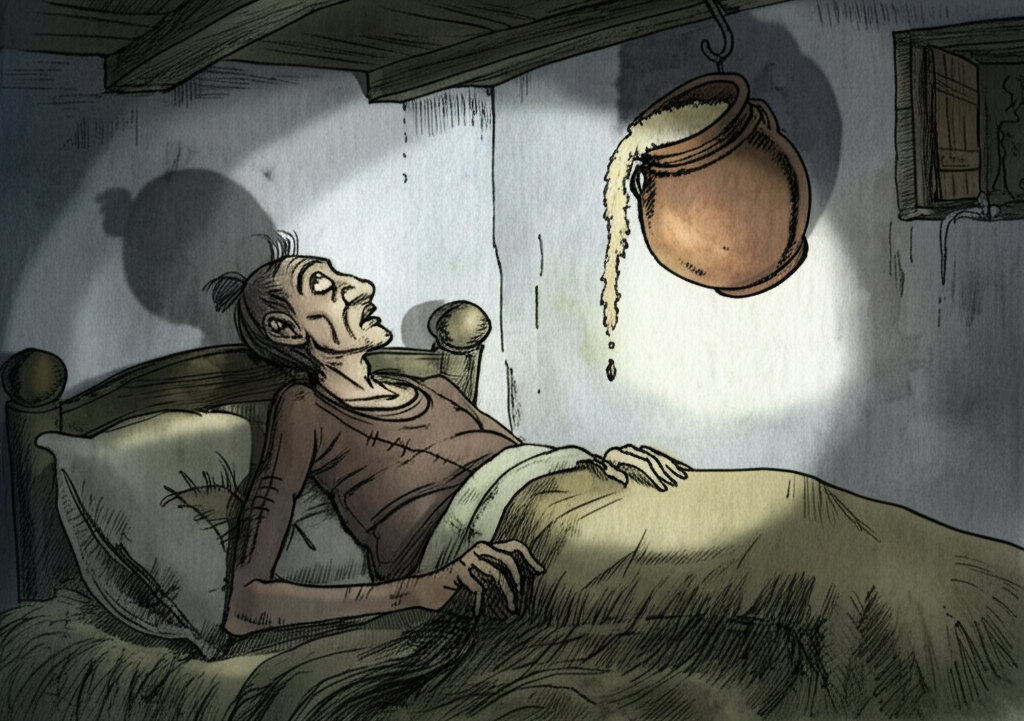
Once upon a time, in a small town, there lived a man named Svabhavakripana, but everyone called him “Mr. Stingy.” He was super good at saving money. He got lots of rice by asking people for it, and after eating a little, he put the rest in a big pot. He hung the pot on a hook on the wall and put his bed right under it. Every night, he would stare at the pot and think, “Wow, that pot is stuffed with rice! If everyone runs out of food, I can sell it and get lots of money!”
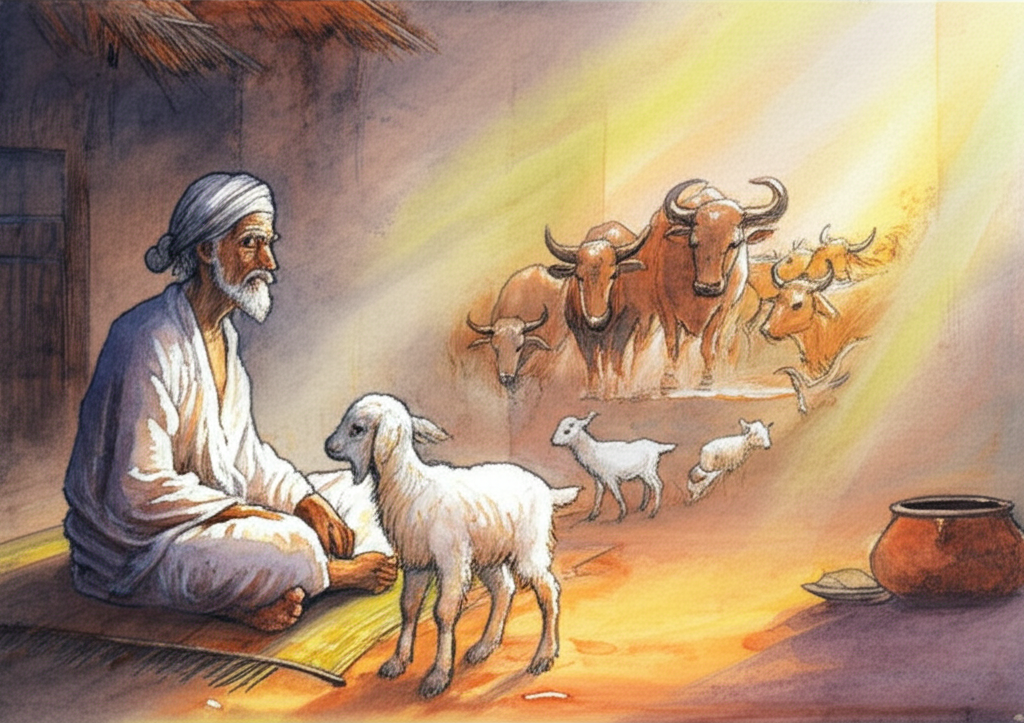
He kept thinking, “With that money, I’ll buy two cute goats. They’ll have baby goats every few months, and soon I’ll have a whole bunch of goats! Then, I’ll trade the goats for cows. When the cows have baby calves, I’ll sell them. Then, with the money from the calves, I’ll buy big, strong buffaloes! With the buffaloes, I’ll get fast horses. When the horses have foals, I’ll have tons of horses, and when I sell them, I’ll have so much gold!”
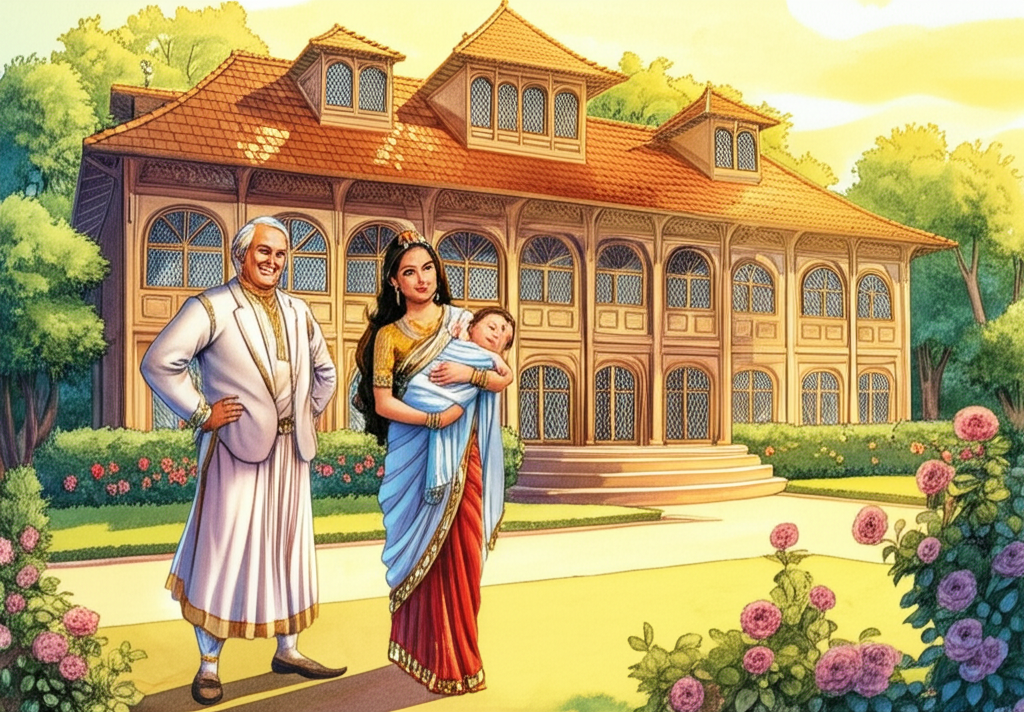
“With all that gold,” he thought, “I’ll buy a huge house with lots of rooms! And then a nice person will come to my house and give me his beautiful daughter to marry, with lots of presents! She’ll have a baby boy, and I’ll name him Somasarman!”
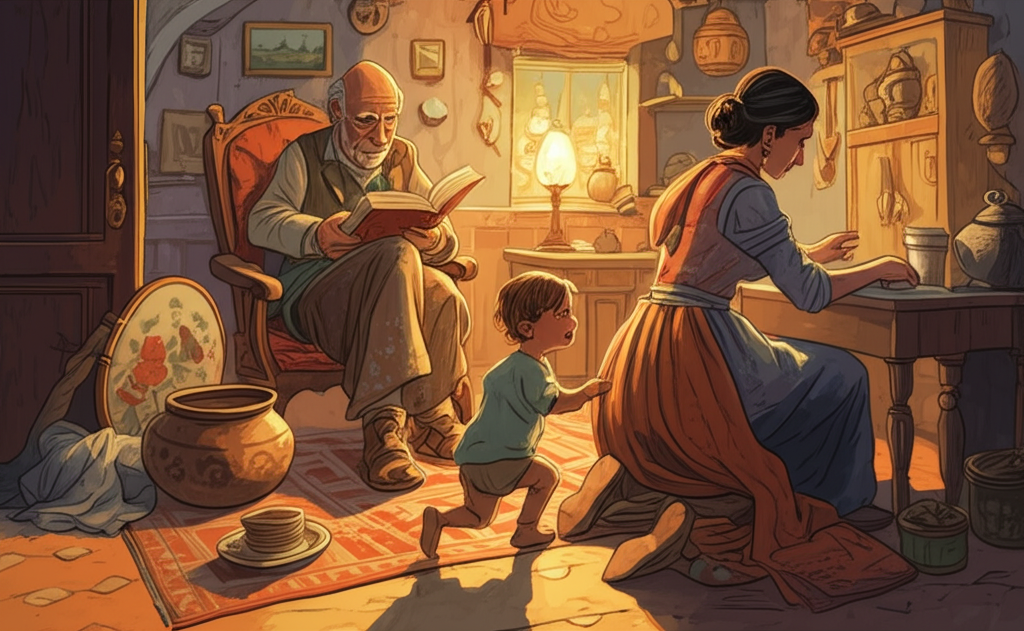
He went on dreaming, “When Somasarman is big enough to play on my lap, I’ll be sitting in the back reading a book. The boy will see me and jump out of his mommy’s arms and run to me to play on my knee! But he’ll get too close to the horse’s feet, and I’ll get really mad! I’ll yell to my wife, ‘Watch the baby! Be careful!’ But she’ll be busy doing chores and won’t hear me. Then I’ll get up and give her a little kick with my foot to get her attention!”
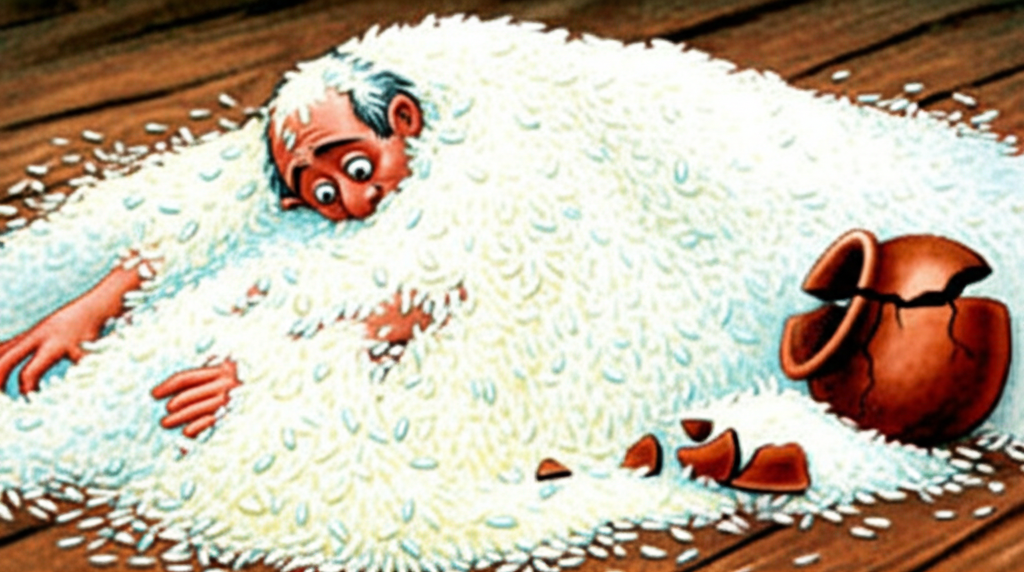
While he was thinking about kicking his wife, he accidentally kicked his foot out and BAM! He broke the pot! All the rice fell down on him, covering him from head to toe in white! That’s why they say, “If you make silly plans about the future, you’ll end up covered in rice, just like the dad of Somasarman!”